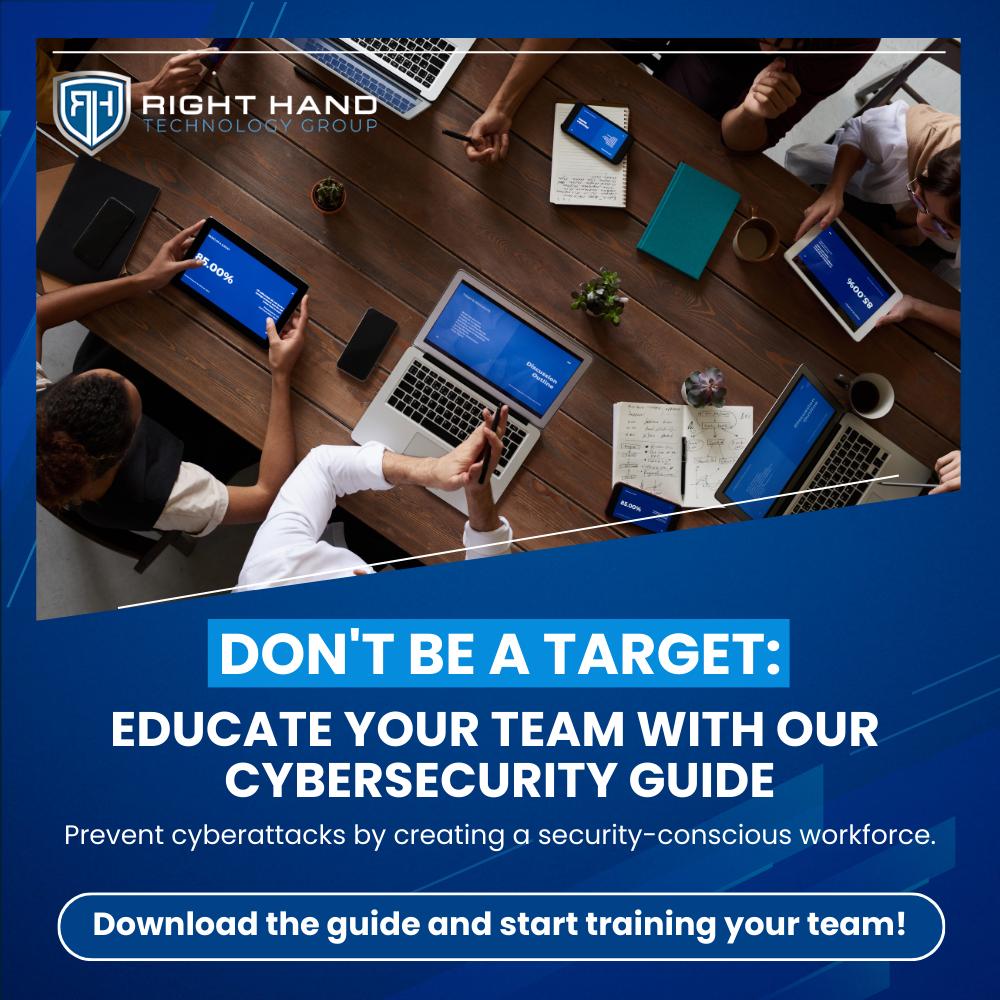Figuring Out What Your Business Needs
Before diving into cybersecurity, you need to know what your business really needs. This means getting why cybersecurity matters and spotting your key assets and weak spots. These are the first steps to keeping cyber threats at bay.

Why Cybersecurity Matters?
Cybersecurity isn’t just a buzzword; it is essential for every business. Cyberattacks can drain your bank account, wreck your reputation, and even get you into legal trouble, especially if you handle sensitive customer info. Cybersecurity helps protect your business and your customers from data breaches, malware, phishing, and other nasty stuff.
A good cybersecurity plan keeps your customers’ trust, ensures your data stays safe and available, and helps you follow the rules. Leaders need to get that cybersecurity isn’t a one-and-done deal; it’s an ongoing process that involves everyone. For more on why cybersecurity should be part of your business game plan, check out our resource on the Cybersecurity Risk Assessment: What You Need to Know?
Spotting Key Assets and Weak Spots
To protect your business, you need to know what data, systems, and assets need guarding. Start by listing all your digital and physical stuff, like hardware, software, and data storage. Think about which ones are crucial for your operations and what would happen if they got hacked.
Once you know your assets, figure out where you’re vulnerable. This could be old software, weak passwords, or not enough employee training. Knowing these weak spots helps you decide where to focus your security efforts.
Making a list of assets and vulnerabilities should involve folks from different departments. This team effort gives you a better picture since different parts of your business will have unique insights into risks and security needs. For tips on starting this process, check out our article on the Cybersecurity Importance Explained | Right Hand Technology Group
By understanding your business needs and potential risks, leaders can create a custom [[cybersecurity strategy plan]] that fits the company’s goals and boosts its security. This step sets the stage for making policies, adding security measures, and building a culture of cybersecurity awareness. For more on the parts of a cybersecurity strategy, explore our section on CYBERSECURITY.
Building a Cybersecurity Game Plan
Every business needs a solid cybersecurity game plan to keep its assets safe and maintain customer trust. In today’s tech-driven world, having a strong plan not only protects your operations but also aligns with your business goals, making sure you’re ready for any digital threats.
Setting Clear Goals
The heart of a good cybersecurity plan is having clear goals. These should match your business aims and focus on protecting your most important assets and data. Goals usually target stopping unauthorized access, keeping data accurate, and ensuring everything runs smoothly.
Your goals must be SMART: Specific, Measurable, Achievable, Relevant and Time-bound. Examples might be cutting data breach risks by a certain percentage, meeting industry regulations, or getting all employees through cybersecurity training within a set time.
| Goal |
Objective |
Timeline |
| Cut data breaches |
Use advanced threat detection tools |
6 months |
| Meet compliance |
Follow all GDPR rules |
12 months |
| Boost staff awareness |
Hold quarterly cybersecurity training |
Ongoing |
For more tips on setting strategic goals, check out our guide on RISK & MATURITY ASSESSMENT
Creating Policies and Procedures
Policies and procedures are the backbone of any cybersecurity plan. They set the rules for best practices and behavior in your company. These should cover things like password management, access controls, using personal devices, and reporting incidents.
Creating these policies means getting input from different departments to make sure they’re thorough and don’t slow down productivity. Once you have them, make sure everyone knows about them. Regular reviews are key to keeping up with new threats or changes in your business.
It’s also crucial to have procedures for regular software updates, data backups, and handling incidents. These should be documented and easy for the right people to find.
To see what should be SECURITY CONTROLS check out our detailed article on essential policy elements.
By setting clear goals and creating strong policies and procedures, businesses can build a cybersecurity plan that protects against today’s digital threats. Remember, a cybersecurity plan isn’t a one-time thing—it’s an ongoing process that grows with your business and the threats it faces.
Beefing Up Your Cyber Defenses
Keeping your company safe from cyber baddies is no joke. You need to lock down your network, guard your data, and make sure your team knows their stuff. Let’s break it down.
Locking Down Your Network
Think of network security as the bouncer at your club. It’s there to keep the riff-raff out and make sure everything inside stays safe. Here’s how you can beef up your network security:
- Firewalls: These are your first line of defense, filtering traffic based on your rules.
- Intrusion Detection Systems (IDS): These guys serve as constant security monitors, always on the lookout for anything suspicious or unusual.
- Virtual Private Networks (VPN): VPNs are like secret tunnels, encrypting data so no one can eavesdrop.
- Regular Updates and Patches: Keeping your software up-to-date is like giving your bouncer the latest training—essential for staying ahead of threats.
Want more tips? Check out our CISO COACHING
Guarding Your Data
Your data is gold, and you need to protect it like Fort Knox. Here’s how:
- Encryption: Your data becomes locked-up behind a secret code, accessible only with the appropriate key.
- Access Controls: Only let the right people in. Set up roles and permissions to keep sensitive info under wraps.
- Data Backup: Regularly back up your data so you can bounce back if something goes wrong.
- Privacy Policies: Stick to the rules and protect your customers’ info. It’s not just good practice; it’s the law.
For a deep dive, check out our RISK & MATURITY ASSESSMENT
Training Your Team
Your employees can either be your greatest ally–or the weakest link. Make sure they’re playing to their strengths: make sure they’re all focused and ready for anything that may arise!
- Security Training: Stay abreast of new threats by providing regular training on how to address them.
- Phishing Simulations: Test them with fake phishing emails to see how they handle it.
- Policy Awareness: Make sure everyone knows the rules and why they matter.
- Reporting Mechanisms: Set up easy ways for employees to report anything suspicious.
Creating a security-savvy culture is key.
By putting these measures in place, you’ll make it a lot harder for cyber crooks to mess with your business. Stay sharp, keep updating your defenses, and always be ready for the next threat. For the latest on what to watch out for, check out the Why Cybersecurity Should Be a Core Part of Your Business Strategy? and Secure Your Network: How to Protect Your Network from Viruses and Attacks
Be Keeping an Eye Out and Ready to Act
A solid cybersecurity game plan isn’t just about putting up defenses; Maintain a vigilant watch, ready to jump in if things start going off the rails. Let’s break down the essentials of staying alert and responding swiftly in the world of cybersecurity.
Always Watching, Always Testing
Keeping tabs on your network and systems is like having a security guard on duty 24/7. You need to spot trouble before it turns into a disaster. Here’s what you should do:
- Network Check-ups: Watch for weird traffic that might mean someone’s poking around where they shouldn’t be.
- Weak Spot Scans: Regularly check your systems for holes that hackers could sneak through.
- Attack Drills: Pretend to be the bad guys and see if your defenses hold up.
Mixing these methods helps you catch shady activities and fix weak spots early. Using automated tools can make this whole process smoother and faster. Want more tips on beefing up your cybersecurity? Check out our detailed guide.
Ready, Set, Respond
When a cyber-attack hits, you need a game plan. An incident response plan acts like a fire drill for your network. Here’s what it should cover:
- Get Ready: Train your team and have tools in place.
- Spot Trouble: Recognize the signs of an attack.
- Lock It Down: Contain the problem to stop it from spreading.
- Clean Up: Get rid of the threat.
- Bounce Back: Restore your systems and get back to business.
- Learn and Improve: Review what happened and make your plan better.
A good response plan can limit the damage and speed up recovery. Regular practice drills ensure your team can act fast when it counts. For a deeper dive into crafting a top-notch response plan, read our article on cybersecurity maturity strategy.
Here’s a quick look at the steps and what to do at each stage:
| Response Stage |
Actions |
| Get Ready |
Train your team and set up tools |
| Spot Trouble |
Use monitoring tools to detect issues |
| Lock It Down |
Isolate affected systems |
| Clean Up |
Remove the threat and secure systems |
| Bounce Back |
Restore operations and watch for more attacks |
| Learn and Improve |
Review and update your plan |
By keeping a constant watch and having a solid response plan, you can stay ahead of cyber threats and reduce the fallout from any breaches. These steps, combined with a thorough cybersecurity strategy, strengthen your defenses against the biggest cybersecurity threats out there.
Compliance and Regulation
Understanding Legal Requirements
Running a business today means keeping up with a bunch of rules to protect data and privacy. Knowing these rules is a big part of any cybersecurity strategy plan. Consider laws like Europe’s General Data Protection Regulation (GDPR), California Consumer Privacy Act (CCPA), and healthcare-specific statutes like HIPAA as examples of legislation protecting consumer data privacy.. These set the standards businesses need to follow.
Companies need to know what these laws require. This often means reporting data breaches, getting consent for data collection, and letting people access or delete their info. Failure to abide by these regulations could result in heavy fines and reduced customer trust. For a closer look at these legal requirements, check out our article on cybersecurity management strategy.
Ensuring Compliance with Regulations
Adherence to rules doesn’t just involve ticking boxes. It’s about weaving these requirements into everything your business does. Here’s how:
- Regular compliance audits.
- Data protection measures that match the laws.
- Training employees on their role in compliance.
Use this checklist to see how well you’re doing:
| Compliance Task |
Description |
| Data Audit |
Check what data you have and how it’s protected. |
| Policy Update |
Make sure your policies are up-to-date with current laws. |
| Training Programs |
Keep employees trained on compliance. |
| Reporting Mechanisms |
Set up clear ways to report breaches. |
For a full guide on adding these tasks to your cybersecurity strategy plan, see our article on information security strategic plan components.
Making compliance part of your daily operations helps avoid fines and boosts your cybersecurity. Leaders should see compliance as an ongoing task and invest in keeping up with new rules. For more on building a strong compliance framework, read our article on cybersecurity framework for small business.
Staying compliant is key to protecting your company’s reputation and avoiding legal trouble. By being informed and proactive, compliance can become a source of competitive edge. For more strategies, explore our resource on cybersecurity as part of a business strategy.
Keeping Your Cybersecurity Game Strong
To protect your business from cyber threats, it’s critical that you regularly review and adjust its security measures. This ongoing effort ensures your defenses stay solid and up-to-date with the latest industry practices.
Regular Check-Ups and Tweaks
Regular check-ups and tweaks are the backbone of a solid cybersecurity plan. Set up a schedule to periodically review your security measures. These reviews can pinpoint areas needing improvement, adapt to new threats, and incorporate the latest tech.
| How Often |
What to Review |
| Every 3 Months |
Update policies, patch software, refresh employee training |
| Every 6 Months |
Do full system audits, risk assessments, and check security controls |
| Every Year |
Review the whole cybersecurity strategy, adjust the budget, and allocate resources |
Make sure these reviews are thorough and cover every part of your cybersecurity strategy. Bringing in internal or external experts can offer new perspectives and spot any blind spots.
Learning from Slip-Ups
Whether an incident leads to a breach or is successfully stopped, there’s always something to learn. Have a process to capture lessons from these events and integrate them into your cybersecurity strategy plan.
Here’s how to learn from incidents:
- Document Everything: Record all details of the incident, including detection, response actions, and the outcome.
- Analyze It: Dig deep to find the root cause and spot any weaknesses in your defenses.
- Share the Knowledge: Communicate findings with relevant folks and update training materials with new scenarios based on the incident.
- Adjust Your Strategy: Modify your cybersecurity strategy plan to fix identified vulnerabilities and prevent similar incidents.
Create a culture where incidents are seen as learning opportunities, not failures. Encourage employees to report and examine security issues openly. This approach strengthens your cybersecurity posture. For more on fostering a supportive security culture, see our article on Top 10 Ways to Teach Cybersecurity Best Practices to Your Team
Constantly evaluating and improving your cybersecurity strategy is key. By regularly reviewing your approach and learning from past incidents, you can stay ready to defend against the biggest cybersecurity threats and adapt to the ever-changing cyber risk landscape.

















